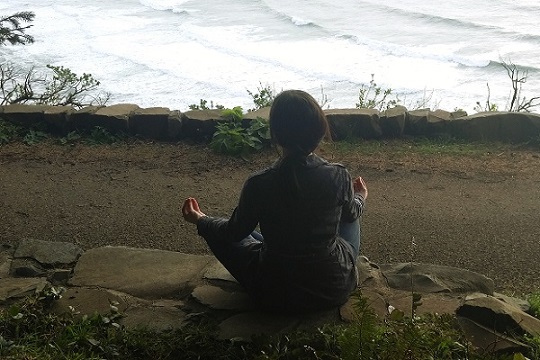
Takeaways
• Yoga is the art of harmonizing or uniting, the mind, body, and soul
• Most commonly practiced type is Hatha Yoga
• Yoga is not just about each individual asanas, but the flow of energy from one posture to another
• The primary advantage of yoga is that it fosters mental health and relieves stress and tension
Are you reeling from the side effects of this fast-paced stressful world we live in today? Do you need a break from all the high-impact exercise routines propagated by trainers? Are you looking for harmony and peace in your life? There is a one-stop solution to all these needs – yoga!
Understanding Yoga
The word 'Yoga' has its roots in the Sanskrit word 'yuj' which stands for 'to join’. In essence, yoga is the art of uniting the mind, body, and soul. Its reach extends far beyond the simple act of physical exercise; it provides a mechanism for rebalancing and realigning the body or the vehicle as regular practitioners would call it.
There are 12 main concepts that are interwoven into yoga practice which facilitates the union of the body with the mind and the spirit. These include:
- Yoga is derived from the original Sanskrit word 'Yuj' this concept is a reference to the act of joining the practitioner with the Supreme Being.
- Karma is derived from the Sanskrit 'Kri', this concerns itself with actions, mental or physical
- Dharma dictates the correct and proper way to conduct life so as to facilitate reception of positive karma
- Swadharma is the obligation that the spirit has to follow the principles of Dharma
- Manah refers to the part of the mind which is the receiver of sensory signals from the body and its organs
- Buddhi means intelligence
- Samskara is a reference to memories
- Vasana refers to the groups of similar actions, impressions, and memories in our mind
- Kriya is the practice of the techniques taught by yoga
- Viveka refers to the ability to differentiate between reality and illusions along with being able to distinguish between temporary and permanent aspects
- Vairagya dictates a disinterest with the current life with an increased focus on the afterlife
- Sanyasa is an attempt to bundle up all the concepts of yoga in search of utter perfection
Not everyone would like to achieve mastery of all of the above concepts. For most, yoga practice still remains just a type of physical activity. That being said, an understanding of some of the relevant concepts, even at a cursory level, can provide spiritual and mental well-being in addition to a physical transformation.
Introduction to the Basics
The type of yoga most often practiced in today’s day and age is Hatha Yoga which is essentially the purely physical component of yoga practice. It is comprised of three main components:
- Asanas – a physical practice of yoga, postures, stretches, and balances;
- Pranayama – reference to the breathing techniques;
- Dhyana – meditation.
The aim of Hatha Yoga is to balance the energy flows and promote controlled movement, flexibility, concentration, and conscious breathing. There are over 200 yoga asanas and only half of these are practiced in the west. These asanas, or postures, can be basic or complex and allow for various levels of challenge. These asanas, or postures, can be basic or complex and allow for various levels of challenge.
The breathing that is supposed to be practiced alongside the various asanas is known as Ujjayi, or Victory breathing. The breathing should not be aggressive, but be steady and deep. The idea is to match the lengths of the inhales and exhales and slowly begin to extend and deepen the breath.
Pranayama is an advanced form of breath control that is practiced independently of asanas. It is the fifth of the eight limbs of the practice of yoga (asanas are the fourth).
Yoga is not just about each individual asanas, but the flow of energy from one posture to another. With the existence of over 200 asanas, each meant for a different purpose, it is rather difficult to pinpoint a specific set as the ideal beginner package. That being said, there are some asanas in particular that help to form the foundation for any routine in the future. Examples of such asanas include downward facing dog (Parvatasana), upward facing dog (Bhujangasana), Triangle (Trikonasana) and Warrior (Virabhadrasana).
Another great way is to begin practicing the Surya Namaskar or the Sun Salutation, a sequence of 12 yoga postures that provide energizing and cardio benefits.
Meditation in yoga is a means of following Kundalini, spiritual energy, moving between the 7 energy centers or chakras of the body. As the energy rises from the bottom of the spine to the top of the head, self-realization can be achieved.
Benefits of Yoga Practice
Finally, we come to the benefits of yoga practice. The first thing to understand is that the practice of yoga is now extended beyond the Hatha Yoga to various other types such as Power Yoga, Bikram Yoga, and Ashtanga Yoga. These variations are designed with the aim to target specific muscle groups and boost fat burning. They are more geared to the weight loss aspect of yoga rather than the integration of mind body and soul, as was originally intended.
The primary advantage of yoga is that it fosters mental health and relieves stress and tension. From a physical standpoint, yoga is designed to boost strength and improve suppleness. It can ease tense muscles, improve flexibility and tone up internal organs. Since violent movements are avoided, there is no formation of fatigue-inducing lactic acid.
In conjunction with proper breathing techniques of hatha yoga, you are stimulating the endocrine, nervous, digestion and circulatory systems. The main advantage of yoga is that it is flexible; it can be molded to suit individual needs for intensity.
There are a few minor problems that can arise from the practice of yoga, which can be easily avoided. Improper form and a haphazard sequence of postures can result in injury, gastric problems, and nausea. While this may seem to be a deterrent, all you need to avoid this is proper supervision.
So, what are you waiting for? Start Yoga Today!


